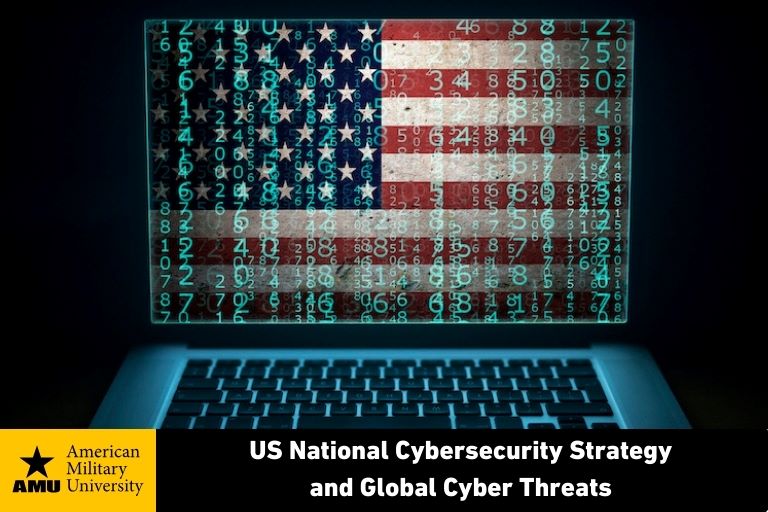By Dr. Jarrod Sadulski | 09/23/2024

A national cyber strategy is needed to protect both the public and private sectors from cyber attacks. Critical infrastructure protection is a vital element of this national strategy.
According to Yahoo Finance, 93% of organizations in the private sector experienced two or more identity-related security breaches in the past year. Machine identities are growing rapidly due to the increasing utilization of AI-generated programs such as Large Language Models.
Yahoo Finance also notes that Large Language Models are machine identities that are created in large numbers, and they often lack proper controls. These machine identities are a "potent threat" that can become involved in a cyber attack.
Global Cyber Attacks
Cyber attacks are a global problem, notes the Center for Strategic and International Studies. For example, in June 2024, Japan, Indonesia, Ukraine, Germany, and Palau experienced significant cyber attacks that disrupted immigration services and included espionage. In addition, there was also the theft of over 20,000 government documents by Chinese hackers after Palau signed a 20-year security agreement with the United States.
Current Trends That Threaten US Cybersecurity
According to a report by the White House, there are five cybersecurity trends that threaten the United States:
- More willingness to attack critical infrastructures: Our adversaries have a growing willingness to compromise U.S. critical infrastructure systems.
- Ransomware: Public safety and economic prosperity are the targets of ransomware groups that seek to evade defensive systems.
- Exploitation of the supply chain: The supply chain in the U.S. is a target by threat actors who seek to cause disruptions.
- Commercial spyware: Cyber-surveillance resources are used to hack into devices and extract sensitive content without knowledge of owners.
- Artificial Intelligence (AI): Publicly available AI tools continue to evolve and are a scalable threat.
The Importance of a National Cybersecurity Strategy
An effective national strategy is essential to address all of these cybersecurity risks and create the strongest possible position against attackers. In Congressional testimony, FBI Director Christopher Wray stated that hackers’ targets include water treatment plants, electrical infrastructure, and gas pipelines. He noted, "Cyber threats to our critical infrastructure represent real world threats to our physical safety."
Wray’s testimony further reflects the need for a national cyber strategy implemented by the federal government and a superior cybersecurity workforce. However, resilience from cyber attacks will require fundamental shifts in our cybersecurity practices.
Preparing for Large-Scale Attacks on Critical Infrastructures
Many of our infrastructures depend upon technology to function, and it would be wise to ensure that this technology is secure before it is attacked. A large-scale cyber attack on an infrastructure that we use in our daily lives would have devastating effects.
For example, imagine what would happen if our communication systems were hacked and became unusable. For the public, being unable to communicate with loved ones and emergency services could lead to widespread panic.
To mitigate this type of threat, families should have a proactive strategy in place. If communications infrastructures are attacked and become unusable, a family could plan to meet at a pre-arranged location or use secure internet services. In any infrastructure attack, remaining calm and listening to local authorities is essential.
CISA’s Role in National Cybersecurity
The Department of Homeland Security's Cybersecurity and Infrastructure Security Agency (CISA) actively works to protect against attacks and our digital future. The benefits of CISA is that it seeks to develop a strategy to bring resources together that benefits the public and private sectors through a national cybersecurity strategy.
CISA's 2023-2025 strategy is designed to increase cybersecurity through three overarching goals:
- Addressing immediate cyber threats
- Hardening the terrain by using stronger security to resist invasions
- Driving security at scale
CISA’s goals seek to secure our national cybersecurity and defend cyberspace by mitigating all immediate vulnerabilities that can be identified through the defense industrial base and other stakeholders. Two fundamental shifts to current U.S. cybersecurity strategies will include:
- Applying ethical hacking to identify weaknesses to be strengthened before organizations are attacked
- Offering incentives to technology providers to strengthen their cybersecurity initiatives
Ensuring a Unified Strategy for Long-Term Cyber Resilience
To develop a solid cybersecurity strategy, there must be support from everyone, especially the Department of Homeland Security, the Department of Justice, private industry stakeholders, and the public. With this type of support, the U.S. will be better able to face national security challenges, both now and in the future.
Cybersecurity Degrees at American Military University
For adult learners who are interested in cybersecurity and learning how to secure cyberspace more effectively, American Military University offers three degrees:
- An online associate degree in cybersecurity
- An online bachelor’s degree in cybersecurity
- An online master’s degree in cybersecurity studies
AMU’s online learning environment provides students with convenience and the ability to study at their own pace while balancing family and job responsibilities. Courses in these programs include topics such as biometrics, hardening operating systems, and cyber warfare. Other topics include cybercrime, securing databases, and law, privacy and digital data.
For more information, visit our information technology program page.

Dr. Jarrod Sadulski is an associate professor in the School of Security and Global Studies and has over 20 years in the field of criminal justice. He holds a bachelor’s degree in criminal justice from Thomas Edison State College, a master’s degree in criminal justice from American Military University, and a Ph.D. in criminal justice from Northcentral University.
His expertise includes training on countering human trafficking, maritime security, mitigating organized crime, and narcotics trafficking trends in Latin America. Jarrod has also testified to both the U.S. Congress and U.S. Senate on human trafficking and child exploitation. He has been recognized by the U.S. Senate as an expert in human trafficking.
Jarrod frequently conducts in-country research and consultant work in Central and South America on human trafficking and current trends in narcotics trafficking. Also, he has a background in business development.
